Mac vs. PC debate isn’t just picking a team in 2025. It’s really about finding what fits your work best. Things changed a lot. Apple Silicon M4 chips and Windows 11’s AI features made big differences.
This guide skips the hype. We help you choose wisely. Let’s look at actual performance, what things cost, and how each platform handles specific tasks. The goal? See which one suits your needs.
TL;DR
- Creatives: Mac shines for color accuracy, Final Cut Pro performance, and P3 gamut screens. Pick a MacBook Pro M4 for video editing, photos, or design.
- Developers: It’s a split. Mac leads with its Unix terminal and iOS dev tools. PC dominates for heavy GPU-based AI tasks and broad cross-platform work.
- Business Users: Windows stays top for deep Microsoft 365 ties, SharePoint processes, and wide enterprise app support.
- Gamers: PC still leads for big AAA games, modding freedom, and accessory choices. Mac’s 2025 gaming push mainly helps casual or cloud play.
- Hybrid Workers: Mac gives amazing battery (18+ hours) and easy switching between devices. PC offers better bang for buck and upgrade options for varied tasks.
The 2025 Landscape: Market Shifts and Tech Evolution
Technology moves fast, but 2025 brings particularly dramatic changes. Apple’s silicon revolution continues while Microsoft doubles down on AI integration. Understanding these shifts helps predict which platform serves you better long-term.
Apple’s Silicon Dominance: M3/M4 Chips Reshape Efficiency
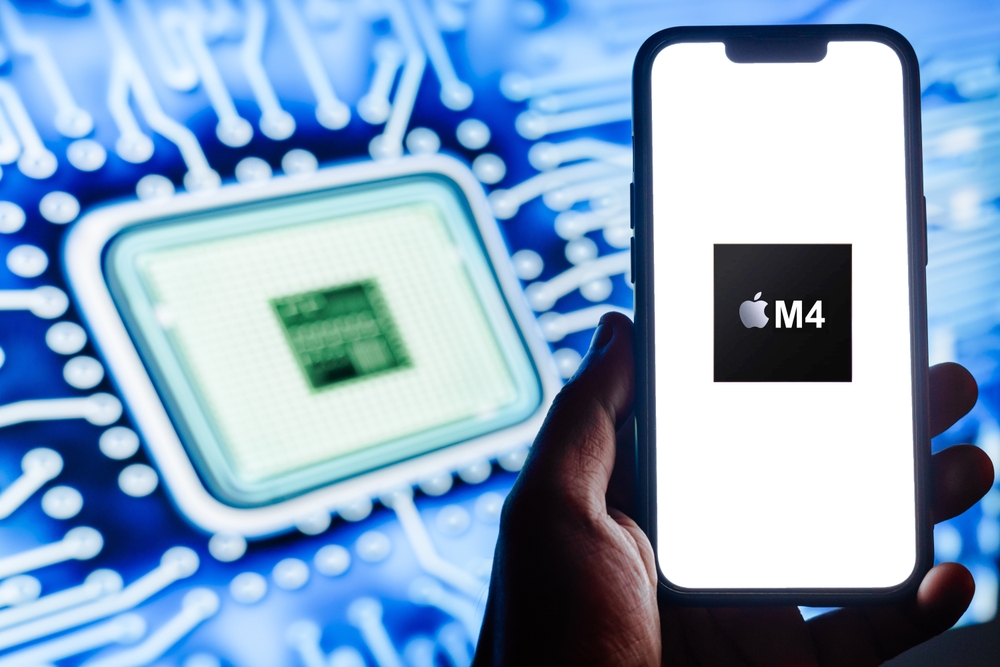
Apple’s M4 chips deliver remarkable performance per watt. These processors integrate CPU, GPU, and Neural Engine on a single die. The result? Laptops that barely get warm during intensive tasks.
M4’s efficiency translates to real benefits:
- 18+ hour battery life during normal use
- Silent operation even under load
- Instant wake from sleep mode
- Consistent performance regardless of power source
This efficiency advantage becomes pronounced during mobile work. Video calls, document editing, and web browsing consume minimal battery compared to Intel or AMD alternatives.
Windows 11’s AI Integration: Copilot+ and Enterprise Focus
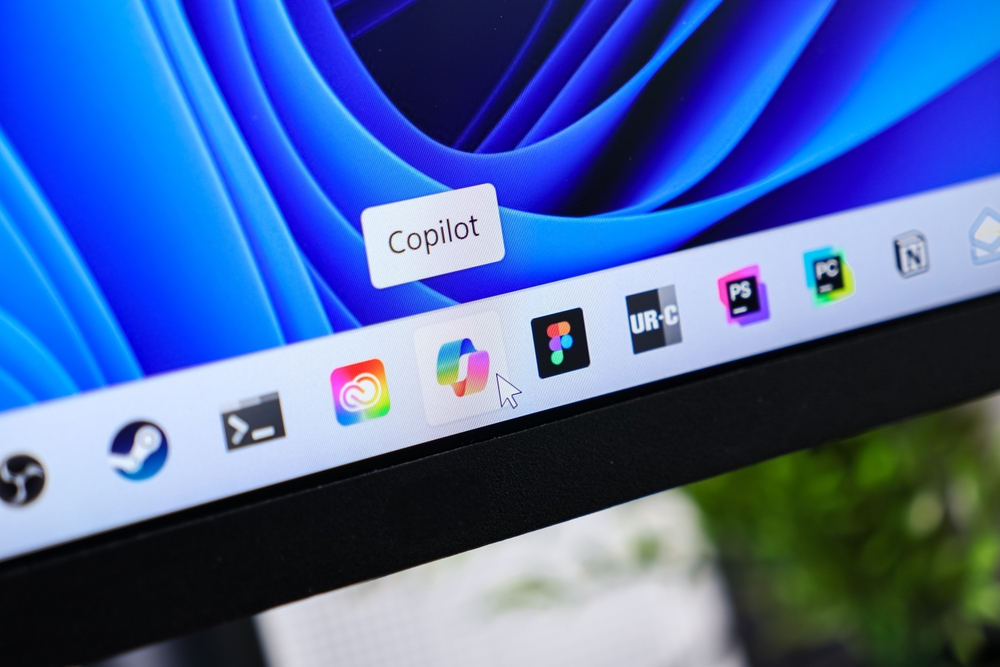
Microsoft’s Windows 11 features center around AI assistance. Copilot+ AI integrates directly into Office applications, file management, and system settings. This isn’t just a chatbot—it’s contextual help that understands your workflow.
Key AI enhancements include:
- Smart file organization based on project context
- Meeting transcription with action item extraction
- Code completion across multiple programming languages
- Email drafting that matches your communication style
Enterprise users benefit most from these features. Large organizations report 15-20% productivity gains when Copilot+ handles routine tasks.
Market Share Realities: Windows (70.6%) vs. macOS (15.7%)
Mac vs. PC still shows Windows holding most of the market, especially for businesses. This leads to wider software availability, more hardware choices, and simpler IT setup for companies. On the other side, macOS keeps growing steadily in creative fields and education. Apple’s ecosystem really pulls in users who have several of its devices.
Performance Face-Off: Raw Power vs. Real-World Efficiency
Benchmarks only tell part of the story. Real-world performance depends on your specific applications and usage patterns. Let’s examine where each platform excels.
Benchmark Battles: M4 Ultra vs. Intel Core Ultra & AMD Ryzen 8000
Mac vs. PC computing power really differs due to their architectures. Apple’s M4 Ultra chips lead in efficiency, while Intel and AMD push raw speed. For tasks using one core – like photo edits, web browsing, or docs – Apple’s M4 chips usually beat the competition.
Multi-core situations are trickier. PCs take the lead when software uses many cores at once. Heavy jobs such as video encoding, 3D rendering, and scientific computing often favor PC hardware.
Thermal Throttling & Sustained Workloads (Video Rendering, 3D Modeling)
Heat management really shows which laptops stand out. Tough workloads test how well each handles pressure.
Apple laptops keep going strong during long renders. Their efficient chips make less heat, so peak speeds hold steady. Windows machines often slow down after 15-20 minutes of heavy use.
Desktops with proper cooling beat any laptop though. Custom setups let them run full power non-stop – something mobile gear just can’t match.
Memory Management: Unified Memory (Mac) vs. DDR5/DDR6 (PC)
Apple’s unified memory offers a nifty advantage. M4 systems share memory between CPU and GPU, skipping separate RAM and VRAM pools. This setup avoids data transfer slowdowns.
PCs work differently, using traditional separated memory. It gives more room for upgrades but can hit bandwidth limits when pushing graphics hard.
What this means depends on the job. Video editing and 3D modeling get a real boost from unified memory. Games and everyday tasks barely notice a difference.
OS Showdown: macOS Sonoma/Sequoia vs. Windows 11 23H2/24H2
Operating system philosophy shapes daily computing experience more than hardware specs. macOS Sonoma vs Windows 11 represents two fundamentally different approaches to user interaction.
UI Philosophy: Minimalism (Mac) vs. Customization (PC)
Apple’s OS focuses on consistency and simplicity. Apps share a similar look and feel. Menu bars, keyboard shortcuts, and visual elements stay predictable across different software.
Windows takes a different path with flexibility. Users get to tweak taskbars, start menus, and desktop layouts a lot. This freedom is great for experts but can be too much for new users.
Which one helps you work better? It really comes down to what you like. Some people value Apple’s predictable approach. Others rely on Windows’ customization to fine-tune their specific workflow.
AI Assistants: Siri vs. Copilot+ Practical Use Cases
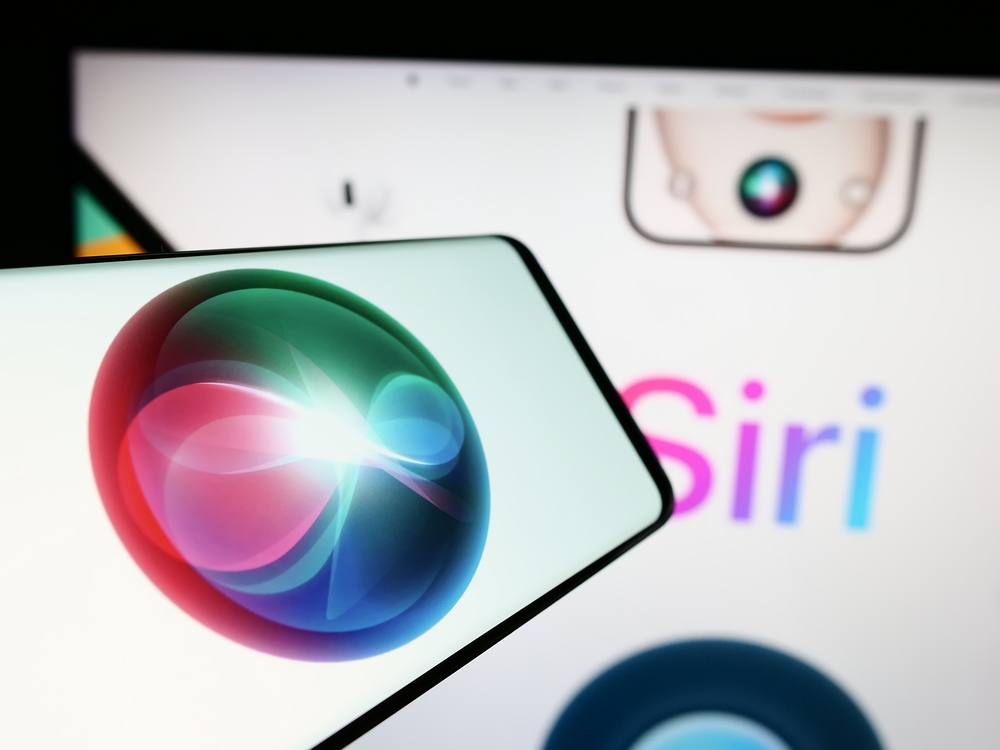
Voice assistants on desktop computers serve different purposes than mobile versions. Siri handles basic system commands and file searches adequately. Copilot+ integrates more deeply with productivity applications.
Practical advantages of Copilot+ include:
- Document summarization across Office applications
- Code explanation in Visual Studio
- Email prioritization in Outlook
- Meeting preparation from calendar context
Siri excels at device ecosystem integration. Commands work seamlessly across iPhone, iPad, and Mac. This consistency benefits users invested in Apple’s ecosystem.
Security & Privacy: Gatekeeper vs. Windows Defender/Pluton
Enterprise security macOS Windows approaches differ significantly. Apple’s Gatekeeper prevents unsigned applications from running without explicit user permission. This reduces malware risk but can complicate software installation.
Windows Defender has improved dramatically. Real-time protection, cloud-based scanning, and hardware-backed security through Pluton chips provide robust protection. Enterprise features like BitLocker encryption and Windows Hello authentication surpass macOS equivalents.
Privacy philosophies also diverge. Apple emphasizes on-device processing and data minimization. Microsoft’s cloud integration provides convenience but requires more trust in their data handling practices.
Hardware Flexibility: Upgradability vs. Ecosystem Lock-In
Hardware philosophy represents perhaps the biggest difference between platforms. Mac prioritizes integration while PC emphasizes modularity.
Mac’s Closed Ecosystem: Benefits (Optimization) and Drawbacks (Repair Costs)
Apple’s closed approach enables remarkable optimization. Hardware and software teams collaborate closely, resulting in excellent performance per watt and seamless feature integration.
Benefits include:
- Optimized performance across all components
- Consistent user experience between devices
- Excellent build quality and materials
- Strong resale value retention
Drawbacks become apparent during ownership:
- Expensive repairs due to proprietary components
- Limited upgrade options after purchase
- Vendor lock-in for accessories and peripherals
- Higher initial costs for comparable specifications
PC’s Modularity: DIY Upgrades and Third-Party Peripherals
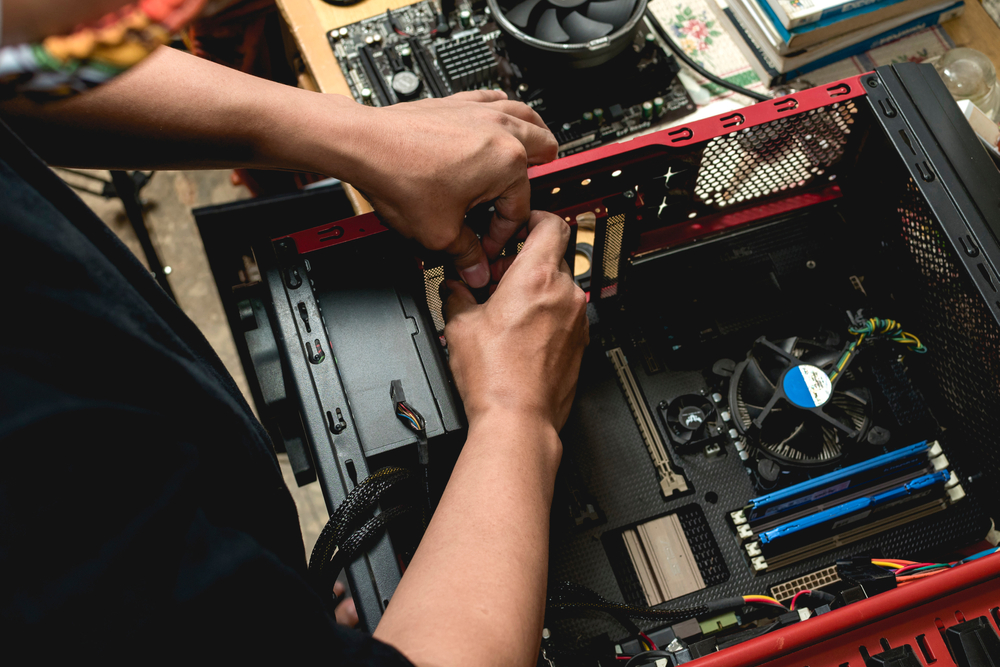
PC upgradability in 2025 remains a significant advantage for many users. Desktop systems allow component swapping, while some laptops offer RAM and storage upgrades.
Modularity benefits include:
- Future-proofing through component upgrades
- Cost optimization by upgrading selectively
- Repair flexibility with third-party service options
- Peripheral compatibility across multiple brands
DIY PC build culture thrives because users can create systems tailored to specific needs. Gaming rigs, workstations, and budget builds all benefit from component choice freedom.
Port Realities: USB4/Thunderbolt 4 vs. Legacy Ports
Modern Macs embrace Thunderbolt 4 exclusively. This provides incredible bandwidth and daisy-chaining capabilities but requires adapters for older peripherals.
PC laptops typically offer mixed port selections:
- USB-A ports for legacy devices
- HDMI outputs for external displays
- SD card readers for photographers
- Ethernet jacks for reliable networking
Port selection impacts daily workflow significantly. Professionals using established equipment may prefer PC’s legacy support. Users embracing newest peripherals benefit from Mac’s Thunderbolt 4 implementation.
Software & App Optimization: Where Each Platform Shines
Application availability and optimization determine platform utility for specific workflows. Neither system excels universally.
Creative Suite (Final Cut Pro, Adobe, DaVinci Resolve)
Performance varies significantly by application. Final Cut Pro remains Mac-exclusive and offers excellent performance on Apple Silicon. Adobe Creative Suite runs well on both platforms but shows slight optimization advantages on Mac.
DaVinci Resolve demonstrates interesting performance characteristics:
- Color grading performs excellently on both platforms
- GPU acceleration favors high-end PC graphics cards
- Export speeds depend more on specific hardware than platform choice
Professional video editors often choose based on existing workflows rather than raw performance differences.
Development Tools (Terminal vs. WSL, Docker Support)
Developer preferences split along platform lines. macOS provides native Unix terminal access, making it preferred for web development and server administration.
Windows Subsystem for Linux (WSL) bridges this gap effectively. Modern WSL implementations provide near-native Linux performance within Windows. Docker Desktop runs efficiently on both platforms.
Platform-specific advantages include:
- Mac: iOS/iPadOS development requires macOS
- PC: .NET development integrates better with Windows
- Cross-platform: Node.js, Python, and web frameworks work equally well
Enterprise/Business Apps (Microsoft 365, SAP, Custom ERP)
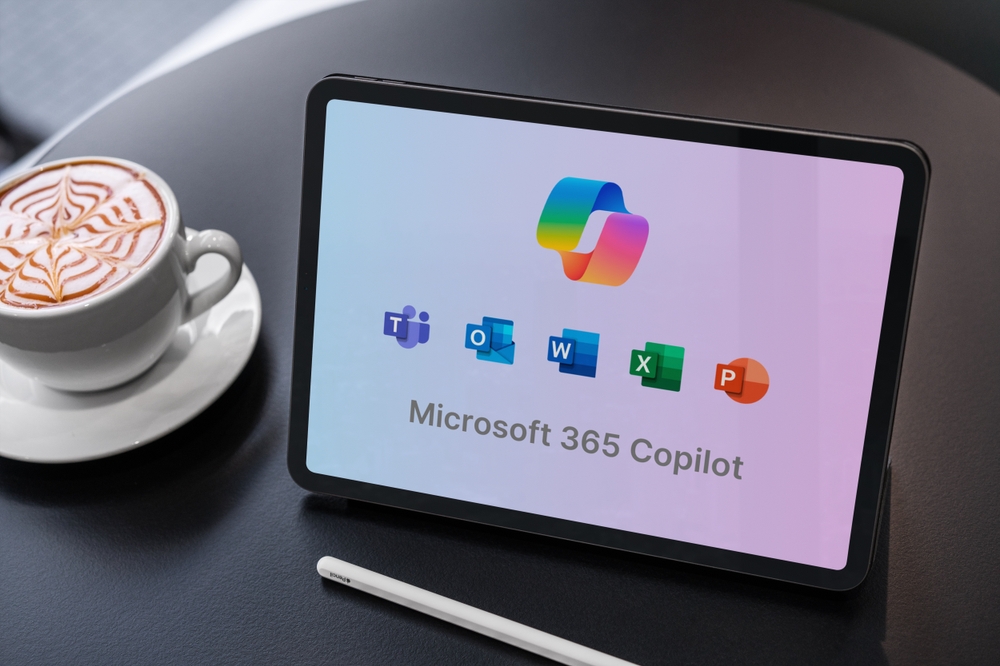
Business software availability heavily favors Windows. Microsoft 365 integration works better on Windows despite Mac compatibility. Custom enterprise applications often target Windows exclusively.
SAP, Oracle, and other enterprise systems typically offer Windows-first support. Mac versions lag behind in features and update cycles when available at all.
Small businesses using cloud-based applications find platform differences less significant. Web-based tools work equally well regardless of operating system choice.
Gaming in 2025: Still a PC Stronghold
Gaming performance and compatibility remain PC’s strongest advantages. While Apple makes progress, Windows dominates gaming scenarios.
AAA Titles, Modding, and Peripheral Support (Steam, Xbox Game Pass)
PC gaming ecosystem maturity shows in every aspect. Steam’s massive library, Xbox Game Pass integration, and peripheral support create unmatched gaming experiences.
Key advantages include:
- Largest game library with backwards compatibility
- Modding communities for extended gameplay
- Peripheral support for specialized controllers
- Performance scaling from budget to high-end systems
Gaming PCs also serve double duty as workstations. High-end graphics cards accelerate creative applications, making gaming systems versatile productivity machines.
Mac’s Progress: Game Porting Toolkit and Metal FX
Apple’s Game Porting Toolkit simplifies bringing Windows games to Mac. Metal FX provides upscaling technology similar to NVIDIA’s DLSS. These improvements help but don’t close the gaming gap entirely.
Notable Mac gaming progress:
- Better compatibility with popular indie titles
- Improved performance on Apple Silicon
- Growing developer interest in Mac gaming market
Cloud gaming cross-platform services like GeForce Now and Xbox Cloud Gaming work well on Mac. This approach bypasses hardware limitations but requires reliable internet connectivity.
Frequently Asked Questions (FAQ)
Can I run Windows-exclusive software (e.g., AutoCAD) on a Mac in 2025?
Yes, several options exist. Parallels Desktop and VMware Fusion provide Windows virtualization on Apple Silicon Macs. Performance varies by application complexity. AI integration computers running Windows VMs can handle most business applications adequately.
Boot Camp is no longer available on Apple Silicon Macs. Cloud-based alternatives like Windows 365 provide access to Windows applications without local installation.
Are gaming PCs still more cost-effective for AAA titles?
Absolutely. Gaming PCs offer better performance per dollar for AAA gaming. A $1,500 gaming PC outperforms any Mac in gaming scenarios while costing less than comparable Mac hardware.
Console gaming provides even better value for casual gamers. PlayStation 5 and Xbox Series X deliver AAA gaming experiences at lower total costs than gaming PCs or Macs.
How does Apple’s M4 chip handle machine learning vs. NVIDIA’s RTX 40 series?
NVIDIA RTX 40 series GPUs dominate machine learning workloads. CUDA ecosystem maturity and dedicated tensor cores provide significant advantages for AI development.
M4’s Neural Engine handles on-device inference well but lacks the raw compute power for training large models. Unified memory architecture benefits some ML workflows but cannot overcome the fundamental performance gap.
Do Macs still offer better battery life for remote work? (18h vs. 10–12h)
Yes, significantly. MacBook Air M4 delivers 18+ hours of typical productivity work. This includes video calls, document editing, web browsing, and light photo editing.
Premium PC laptops achieve 10-12 hours under similar conditions. Gaming laptops and high-performance workstations typically provide 4-6 hours of battery life during intensive tasks.

